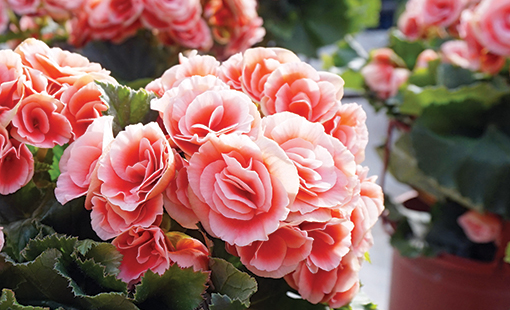
Growing Rieger Begonias
Flowering begonias, also known as Rieger begonias, are beautiful flowering winter plants with creamy blooms in bright yellows, reds, pinks and even white. They are fast-growing, and typically bred to bloom during the winter season and sold as disposable plants; the idea is to enjoy the bloom and throw them out after the season is over. But you needn’t follow this rule: You can grow Rieger begonias year-round and enjoy their blooms next fall.
Care
The original plant was a cross between a standard wax begonia and a tuberous begonia, and has since evolved into a thriving category of its own. They are also sometimes called elatior begonias, although this is the same plant as the Rieger begonia. Today, the flower variety is achieved by crossing existing hybrids with each other and standardizing for color.
The main joy of a Rieger begonia is its lovely flowers, so look for new plants with lots of unopened, tight and healthy buds. Never let your Rieger begonia sit in water or spray the leaves directly with water. Both of these can encourage diseases that will kill the plant.
Light
Rieger begonias need bright, indirect light year-round. They are photoperiod bloomers, meaning the bloom is stimulated by the number of hours of light they receive.
Water
Keep the top 1/2 inch of your Rieger begonia dry between waterings.
Temperature
Rieger begonias need average to warm, and humid, temps.
Soil
Airy, light, fast-draining soil is perfect for these begonias.
Fertilizer
Use liquid fertilizer weekly at quarter strength or biweekly at half strength. In the fall, switch to a high-phosphorous fertilizer to encourage bigger blooms.
Pruning
As old flowers are spent, pinch off the flowers to encourage new blooms to open. After the plant is done blooming, cut it back and let it dry out, then move it to a bright place and begin watering again when the weather warms up.
Potting and Repotting
Even people who keep Rieger begonias frequently don’t repot the parent plant. Instead, after the dormant period is over and the plant has begun to regrow, you can cut off the new leaves and propagate them as leaf-tip cuttings, then discard the parent plant. Alternatively, you can only take some of the new growth for propagation and let the parent plant grow out again (its bloom the following year might not be as spectacular). When repotting a Rieger begonia, only increase the pot size as much as necessary. These plants like to be slightly pot-bound.
Common Pests & Diseases
Watch out for spider mites, whiteflies, aphids, mealybugs and thrips; all love this beautiful flowering begonia.
Information courtesy of TheSpruce.com

 Adams Fairacre Farms
Adams Fairacre Farms